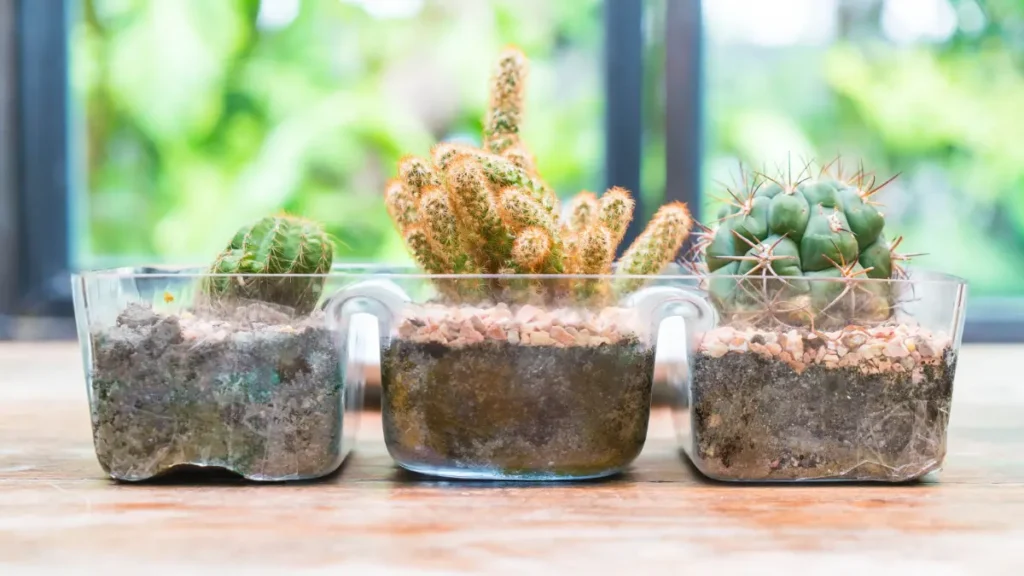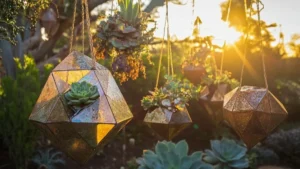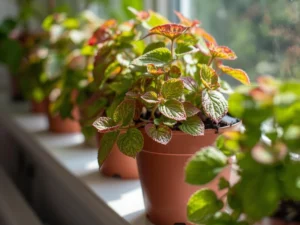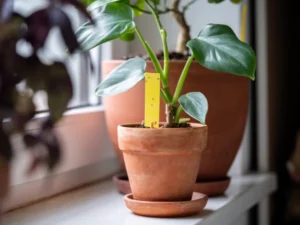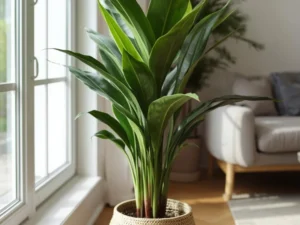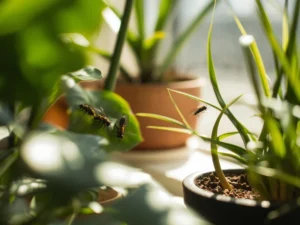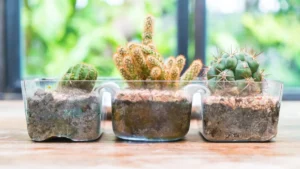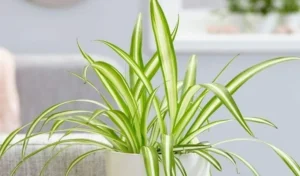There’s something magical about building a tiny world that thrives on its own. And my first DIY terrarium sat on my desk, a swirl of moss and glass that needed almost no care. Because it asked so little, it reminded me that even small, green spaces can calm the chaos of modern life.
Moreover, terrariums blend creativity with a touch of science they’re gardens in miniature. Besides, they’re perfect for busy plant lovers because they stay lush with minimal watering and add personality to any corner. Therefore, think of it as your personal rainforest only simpler, softer, and far easier to care for.
A World Within Glass: Understanding the Terrarium
A terrarium is a self-sustaining world inside glass, soil, plants, and moisture working together like nature in miniature. Sunlight warms the air, water rises and falls, and the cycle repeats. Your mini indoor garden becomes a living piece of art that practically cares for itself.

Closed DIY Terrariums
Closed terrariums are little rainforests for ferns, mosses, and tropical plants because they naturally trap humidity and recycle moisture. Moreover, they create a misty, lush environment that feels alive and self-sustaining. With steady light and minimal care, they thrive quietly so it’s truly nature’s magic preserved under glass.
Open DIY Terrariums
Open terrariums breathe easier and are perfect for succulents and cacti because they thrive in dry air. Moreover, their open design prevents rot and keeps everything crisp, bright, and clean. So, think of it as your own desert-in-a-bowl bold, low-maintenance, and effortlessly stylish. Therefore, it’s the simplest way to bring a touch of the desert indoors with natural charm.
Gathering the Essentials for Your DIY Terrarium
First, building a DIY terrarium doesn’t require fancy tools just the right mix of simple materials and a little care. Because every layer serves a purpose, from drainage to decoration, each part helps your miniature ecosystem stay healthy and balanced.
Moreover, the process is relaxing, creative, and deeply rewarding for anyone who loves plants. Therefore, below is a quick list of essentials trusted by horticulturists and plant enthusiasts alike.
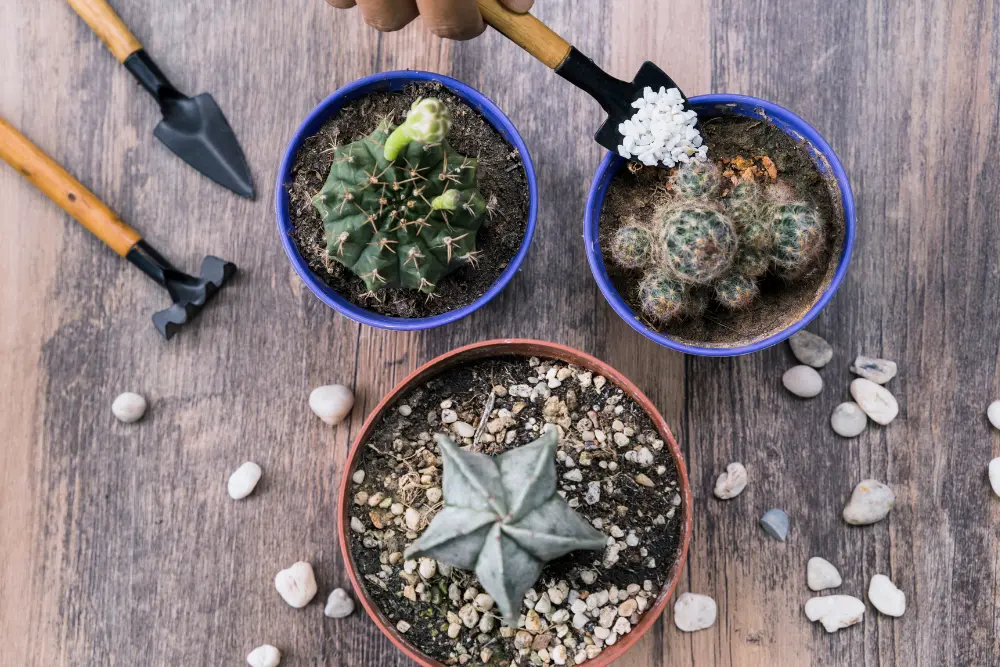
Materials You’ll Need
- Container: Clear glass without drainage holes to seal in moisture.
- Terrarium plants: Small, slow-growing species for enclosed spaces.
- Sheet moss: Holds soil in place and adds rich green texture.
- Gravel / sea glass / beach stones: Add drainage and visual appeal.
- Activated charcoal: From a nursery or pet store, prevents odor and mold.
- Sterile potting mix: Clean blend avoids perlite and vermiculite.
- Large spoon: For neat soil layering without harming plants.
- Spray bottle: Maintains humidity and keeps foliage fresh.
- Decorative elements: Small stones, shells, or trinkets for a personal touch.
Having everything ready ensures your project stays neat and enjoyable.
Step-by-Step: How to Build a DIY Terrarium
Creating a homemade terrarium is easier than it looks, think of it as layering nature inside glass. Each step matters, from picking the right container to arranging your plants just so. With a few simple materials, you’ll have a self-sustaining garden.
1. Choose Your Container
First, start with a clear container or even aquariums, goldfish bowls, and vintage mason jars work beautifully. Also, try upcycling an old pickle jar from your home or browsing a thrift store for something unique.
Moreover, it’s an eco-friendly choice that gives new life to old items. So, you’re not just crafting a terrarium you’re creating something personal and sustainable therefore helping the environment in the simplest way.
2. Pick the Right Plants
First, visit a garden center or nursery to find small houseplants like croton, pothos, lucky bamboo, or creeping fig. Next, mix textures and colors with ferns, spike mosses, or a polka dot plant for visual balance.
Moreover, the goal is to choose slow-growing terrarium plants that fit your container comfortably and thrive together. So, your mini ecosystem stays healthy, full, and effortlessly beautiful.
3. Create Drainage Layers
Since terrarium containers don’t have drainage holes, start with gravel, sea glass, or beach stones. Add activated charcoal next to prevent fungi and odors, then top it with a clean potting mix. These drainage layers keep plant roots healthy and the water cycle balanced.
4. Add Moss and Soil
First, spread sheet moss over your stones and charcoal to separate the potting soil. Next, use a sterile potting mix, and skip perlite or vermiculite for a cleaner, more polished look. Then, fill the base layer to about one-third of your container so there’s plenty of room for your plants to settle and grow naturally.
5. Prep and Arrange Your Plants
First, remove your plants from their nursery pots and gently loosen the roots. Then, plan your layout and visualize how each plant will grow inside the glass. Next, place larger plants in the center and smaller ones around them for balance.
Finally, a well-arranged design makes your terrarium feel natural, harmonious, and thoughtfully crafted so it looks alive from every angle.
6. Plant with Care
Use a large spoon to dig small holes in the potting mix, then tuck each plant gently inside. Aim for a soft, asymmetrical design set the tallest plant toward the back or slightly off-center. Leave space between plants to let them breathe.
7. Add Decorative Touches
First, comes the fun part sprinkle bark chips, colored gravel, or tiny figurines to personalize your mini garden. Next, add seashells, smooth stones, and a few whimsical pieces for extra texture and charm. Moreover, these finishing touches bring character and warmth to your setup. So, your terrarium truly feels like your own little world alive, unique, and full of quiet personality.
Easy Care Routine For DIY Terrarium
After all, a terrarium doesn’t demand much just a little light, the right placement, and mindful watering. Because it thrives on balance rather than effort, think of it as a calm, miniature garden that rewards consistency over time.
Moreover, when you give it steady attention, it quietly returns the favor with lasting beauty and growth. So, here’s how to keep your terrarium healthy, glowing, and full of life.

Placement and Light
- Keep the container in bright, indirect sunlight.
- Avoid heat; gentle light keeps plants calm.
- No window? Use a fluorescent bulb or 100-watt light.
Watering and Moisture
- Open terrariums: mist with a spray bottle weekly.
- Closed terrariums: rely on condensation as water supply.
- If soil is damp, skip watering.
Balance and Care
- Yellow leaves: Overwatering, let the soil dry out.
- Foggy glass: Too much humidity, open the lid briefly.
- Mold: Remove affected plants, wipe glass, increase airflow.
- Overgrowth: Trim and replant cuttings as needed.
- Add drops when dry soil appears.
- Aim for light moisture, not puddles
Creative DIY Terrarium Ideas & 2025 Trends for Modern Living
Take your DIY terrarium beyond the basics with fresh ideas and modern design twists. Moreover, this year is all about sustainability, creativity, and bringing green spaces into everyday décor. Additionally, these trends stand out because they blend art and nature in simple, meaningful ways. Therefore, from living habitats to eco-chic displays, they’re redefining what indoor gardening truly looks like.
For added inspiration on maintaining healthy greenery, explore our guide on growing aloe vera indoors a perfect plant for modern terrariums and sustainable home décor.
Terrariums with Animals
Add life to your terrarium with small reptiles, amphibians, or insects in a bioactive setup. These mini habitats need balanced light, moisture, and airflow to thrive. Begin with plants, then expand once your little ecosystem feels settled and self-sustaining.
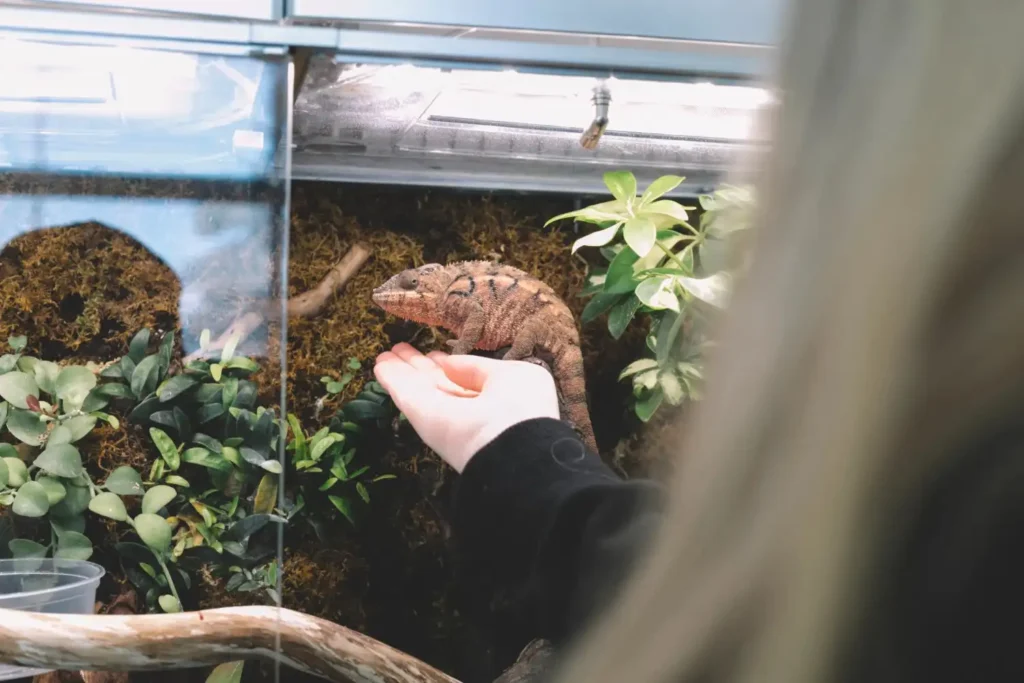
Design & Display Inspirations
Turn your terrarium into a showpiece that tells a story, and let it become part of your home’s personality. Moreover, try placing it on a floating shelf or windowsill, and cluster several under warm LED lighting for a cozy glow.
Additionally, mix upcycled glass jars, geometric frames, and hanging planters because their variety adds charm and depth. So, your space feels effortlessly stylish, modern, and full of quiet green life.
DIY Terrarium Trends 2025
This year, the spotlight is on eco-forward design and minimalism. Think recycled glass, handcrafted clay bases, and soft LED grow lights. Wall-mounted orbs and clean, open bowls bring nature’s calm right into modern living spaces.
A Symbol of Green Living
A terrarium is more than greenery, it’s a symbol of balance and care. Each glass world reflects sustainability, creativity, and mindful living. In 2025, these miniature gardens remind us that nature’s peace can start small, right at home.
Conclusion: Bringing Nature Home
After all, a DIY terrarium isn’t just a craft, it’s a slice of nature made personal. With glass, soil, and a few plants, you build a living world that grows quietly in your space because it carries your care in every layer. Moreover, it’s creativity, calm, and connection all wrapped in one clear container. So, each time you look at it, you’re reminded that nature always finds its way back therefore, even small worlds can bring big peace.
Each layer tells a story of balance of light, moisture, and patience. Whether it’s a lush tropical setup or a minimalist succulent bowl, your terrarium reflects your personality. For more inspiration on styling and home design, explore ideas from Martha Stewart Home Decor to add elegance and harmony to your living space. So, grab a jar, add some green, and let your tiny world thrive.
FAQs
How often should I water my DIY terrarium?
Watering depends on the type. Closed terrariums recycle moisture through condensation and may need water only every few months. Open terrariums benefit from a light mist with a spray bottle once a week or when the soil looks dry.
Can I use any container for a terrarium?
Yes, as long as it’s a clear glass container like a mason jar, aquarium, or pickle jar. Avoid containers with drainage holes, since moisture needs to stay inside to create a balanced ecosystem.
What plants grow best in a terrarium?
For humid setups, try ferns, mosses, or polka dot plants. For open designs, go with succulents or cacti that prefer drier conditions. Choose small, slow-growing terrarium plants that won’t outgrow their space.
Why is my terrarium foggy inside?
A foggy interior means there’s too much moisture. Simply remove the cover for a few hours to let it breathe. A little condensation is healthy; it shows your natural water cycle is working.
How long does a terrarium last?
With proper light, moisture, and care, a terrarium can thrive for years. Some sealed glass gardens have lived over a decade proof that balance and patience always pay off.

